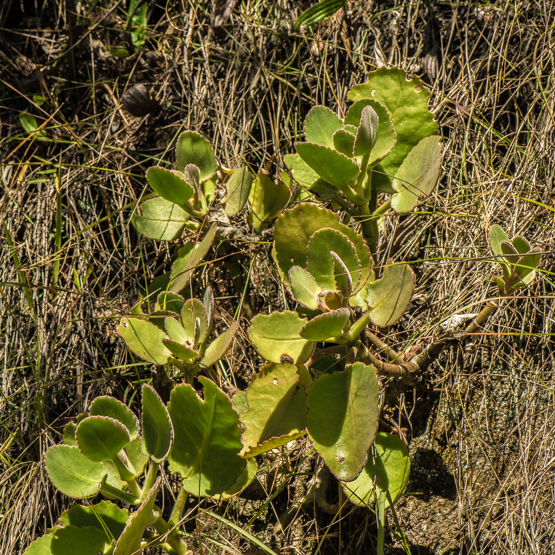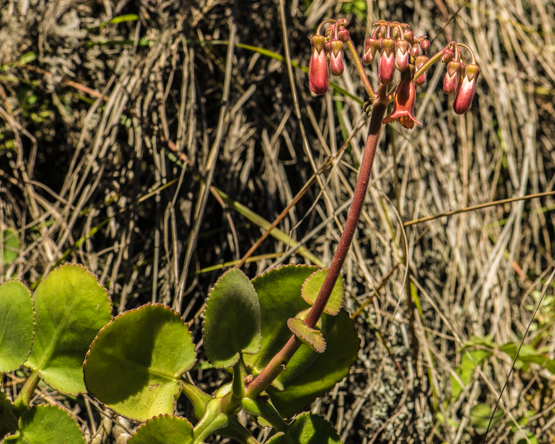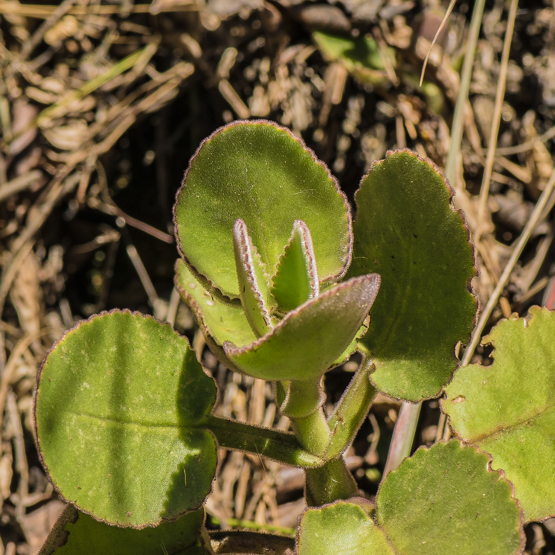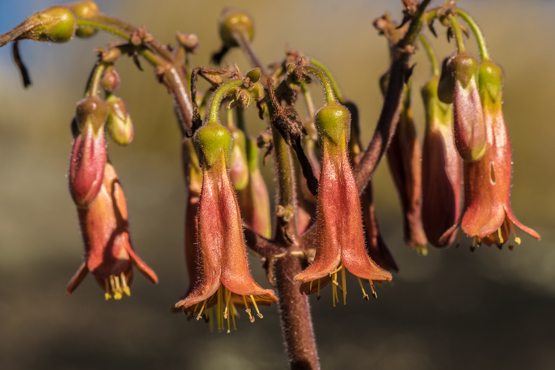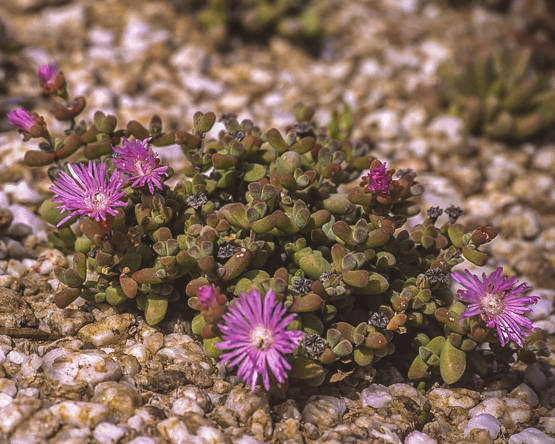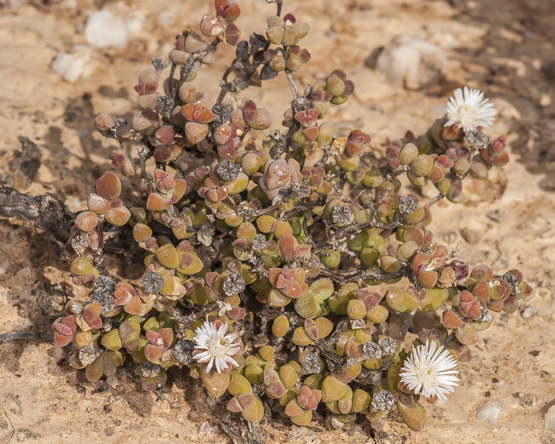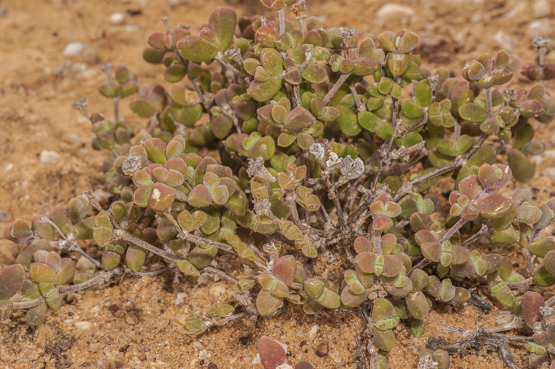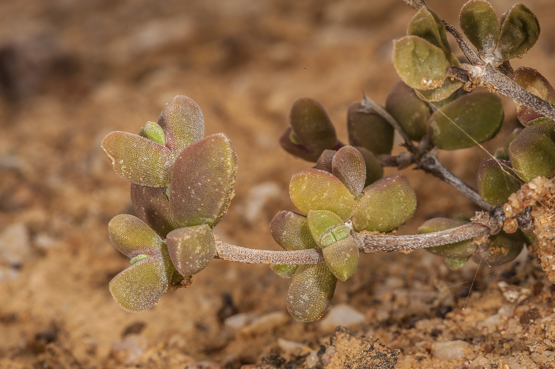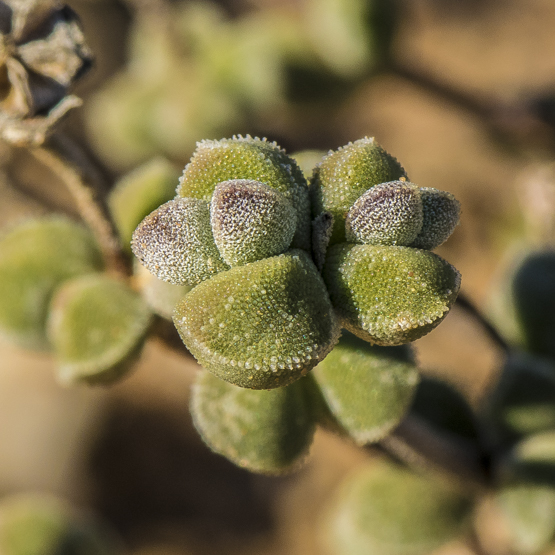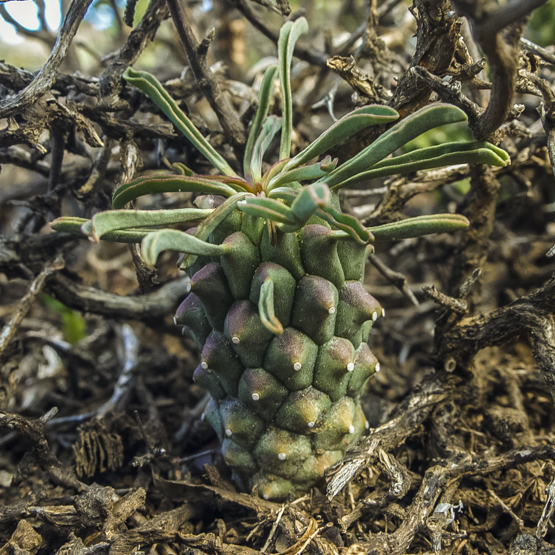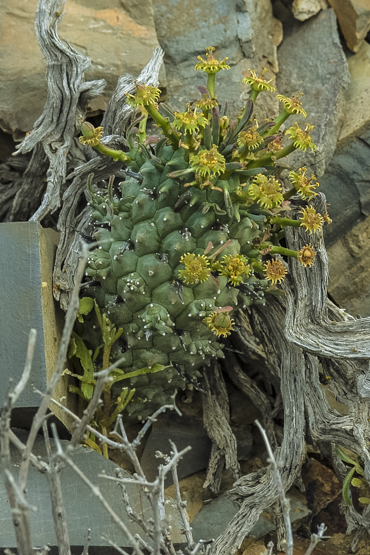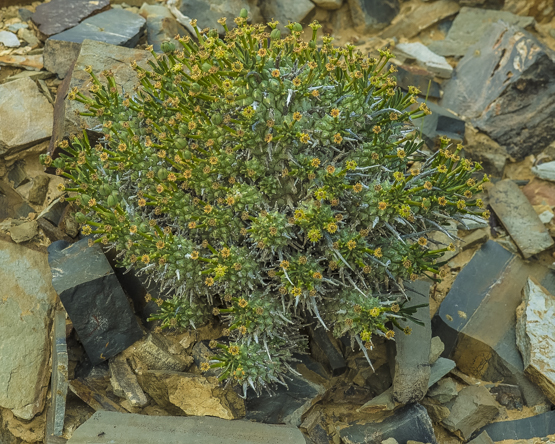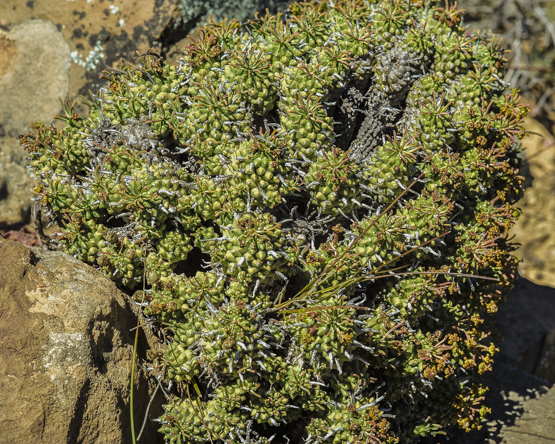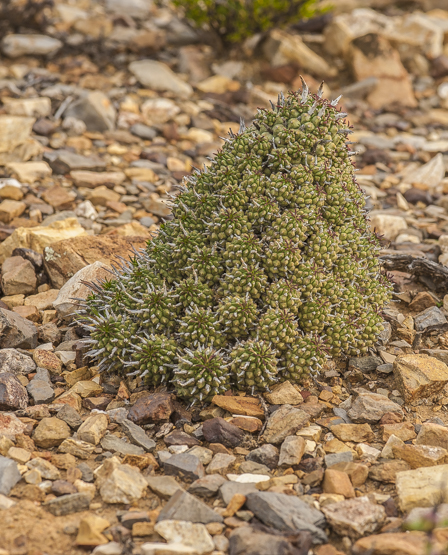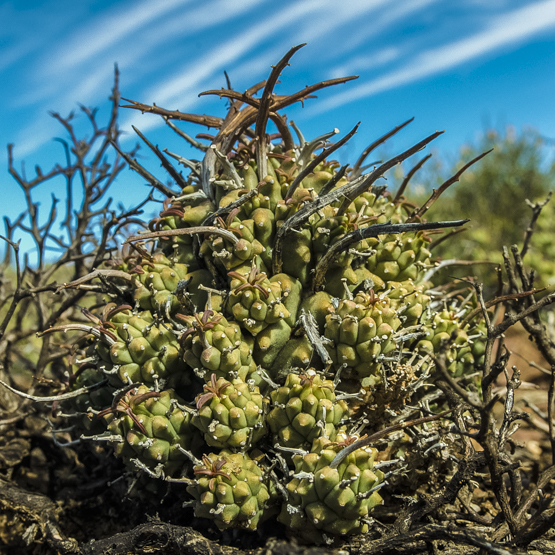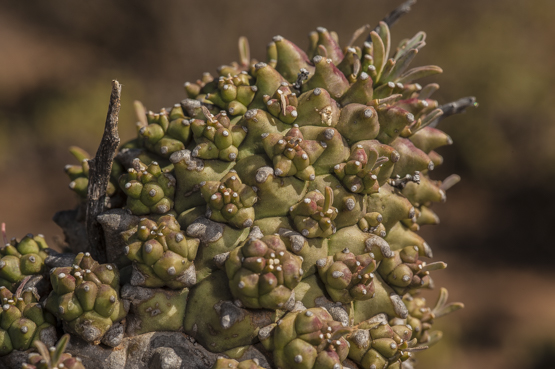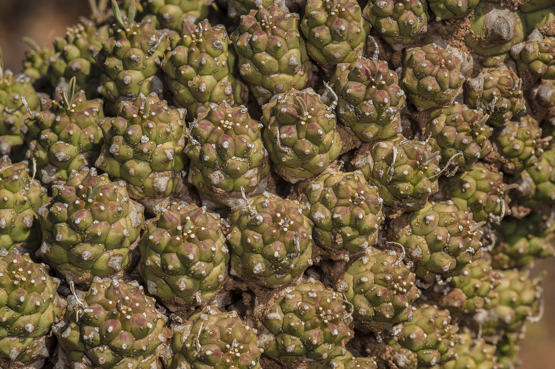Although the plants are very variable in almost all respects, they are always completely and densely covered with white to reddish hairs (except the inside of the flowers).
They have erect to creeping stems, 0.5-1.2 m tall and with egg-shaped to round leaves 16-40 cm long and 0.6-3 cm wide, often with an auriculate* base. The upper leaves are stalked, the ones near the base without stalks.
The inflorescenses are 15 cm wide and produce bulbils; the flowers have 1.4-3 cm long tubes and are red, pink, or yellow, often with red stripes.
The species occurs in central, eastern and northern Madagascar, usually on damp or wet rock surfaces.
Several varieties have been described, but they are not upheld in the Illustrated Handbook of Succulent Plants.
*auriculate: with small roundish or ear-like appendages.
Plants photographed in June 2017
